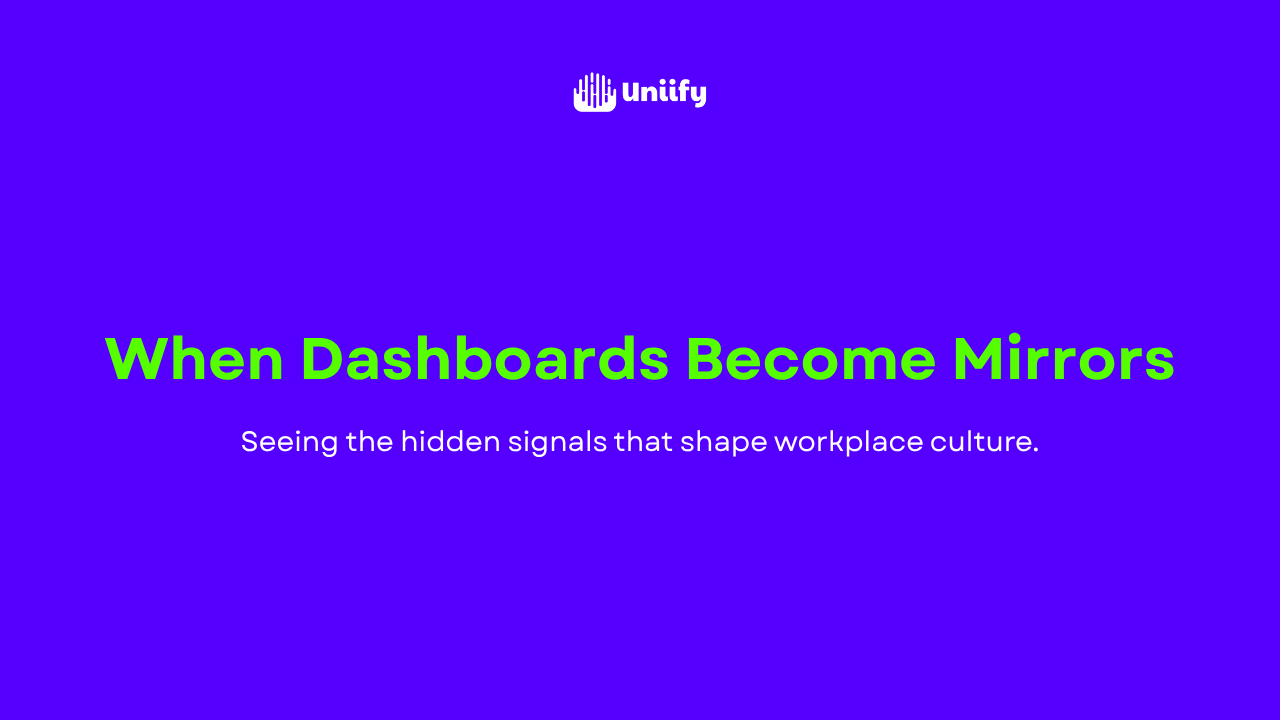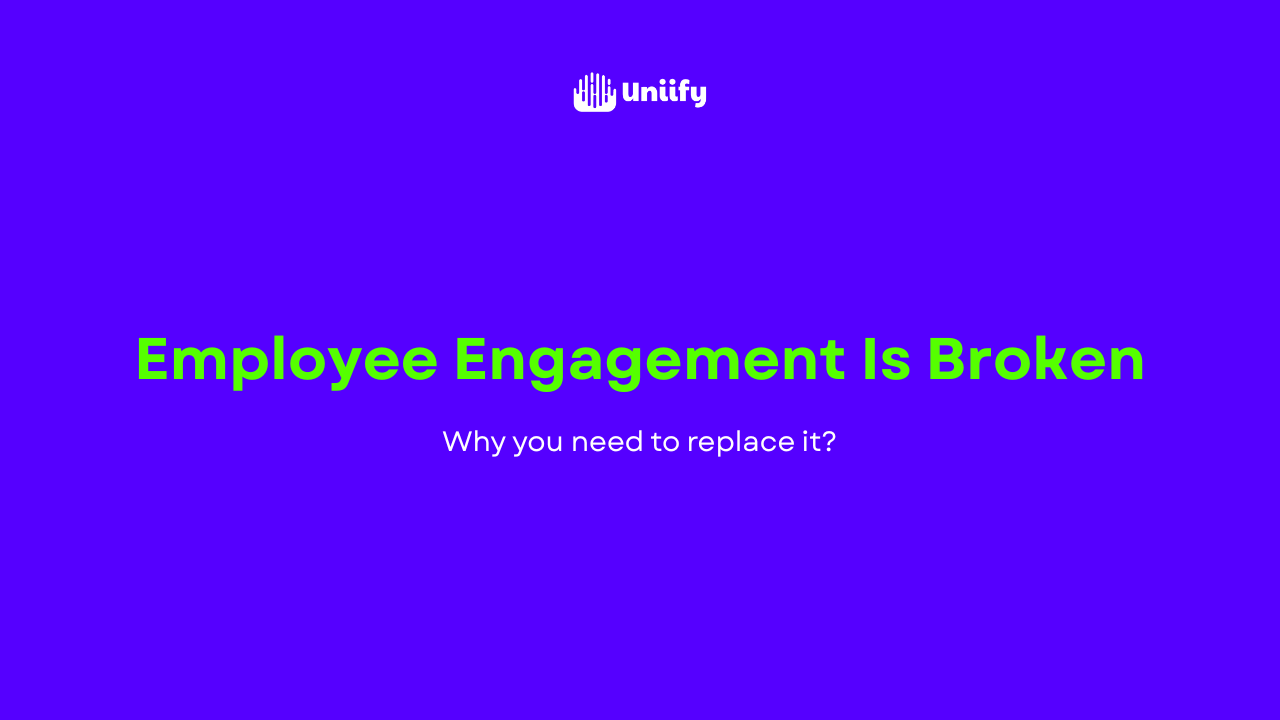Most organizations today are rich in data but poor in understanding.
Every dashboard claims to show how the company is doing — engagement scores, productivity trends, retention rates — yet none of them can answer the simplest question:
“How are our people, really?”
The truth is, metrics show motion. But mirrors show meaning.
Dashboards were built to measure performance. What they need to become now are mirrors that reflect the emotional truth of work — what people feel, fear, and hope for inside the culture.
The Problem with Metrics Alone
Data is a brilliant storyteller — but only when we listen for what it’s not saying.
HR dashboards are designed to track numbers: response rates, participation levels, engagement indexes.
But behind every percentage lies a pulse.
Behind every graph lies a story.
You might see a 90% engagement score — and still have burnout brewing beneath the surface.
You might see stability in headcount — and miss that belonging has quietly declined.
Culture isn’t a KPI. It’s a living ecosystem.
And like any ecosystem, you can’t fix it by staring at the thermometer. You fix it by reading the weather.
The New Lens: From Dashboards to Mirrors
A mirror doesn’t just display data — it reflects state.
When dashboards become mirrors, they do three things:
- Reveal Emotion, Not Just Action
- They surface how people feel about what they’re doing, not just what they’ve done.
- Show Connections Between Signals
- Engagement, wellbeing, recognition, performance — not separate silos, but threads of one cultural fabric.
- Prompt Reflection, Not Just Reporting
- Instead of asking, “What’s the score?” they ask, “What’s the story behind it?”
This is what modern HR is learning to do: shift from counting to connecting.
Hidden Signals That Culture Sends
Culture doesn’t announce its changes. It whispers.
HR leaders who listen carefully can detect these subtle shifts long before data confirms them.
- Silence in meetings: not disinterest, but discomfort.
- Shorter recognition messages: not efficiency, but emotional fatigue.
- Increased activity, decreased enthusiasm: not productivity, but quiet pressure.
These are the hidden signals — the ones that reveal the heartbeat behind the metrics.
If dashboards can be redesigned to reflect them, data becomes empathy in disguise.
How to Make Dashboards Reflective
To turn dashboards into mirrors, HR needs three design shifts:
- Integrate qualitative signals
- Combine pulse scores with emotional check-ins, open-text reflections, and story-driven insights.
- Show trends that invite curiosity
- Instead of static reports, show how sentiment and energy move over time — like tides, not snapshots.
- Connect data to real actions
- When leaders see a dip, they shouldn’t ask for explanations. They should ask, “What can I do differently this week?”
When data triggers reflection instead of reaction, dashboards evolve from tools to teachers.
The Everyday EX Connection
In the Everyday EX framework, reflection is what transforms action into understanding.
Listen and Care fuel the insight. Empower and Recharge turn it into change.
Dashboards are simply mirrors for these rituals — reflecting how well the organization listens, how it cares, and how often it renews.
When HR leaders begin to see data as dialogue, culture starts to speak back.
The Uniify Perspective
At Uniify, we’re helping organizations turn their dashboards into living reflections.
Our analytics don’t just display metrics — they interpret mood, meaning, and movement.
We believe that when leaders can see the human story behind the numbers, they stop managing culture and start understanding it.
Because data without empathy is just noise. Data with empathy is insight.
Human Signature
The smartest dashboards don’t measure success — they reveal soul.
In Essence
- Metrics capture motion, not meaning.
- Dashboards become powerful when they reflect emotion and connection.
- HR’s role is to read the quiet signals behind data.
- Real culture change begins when leaders see data as mirrors, not scorecards.
That’s why we built Uniify — to make Everyday EX real, measurable, and human.








